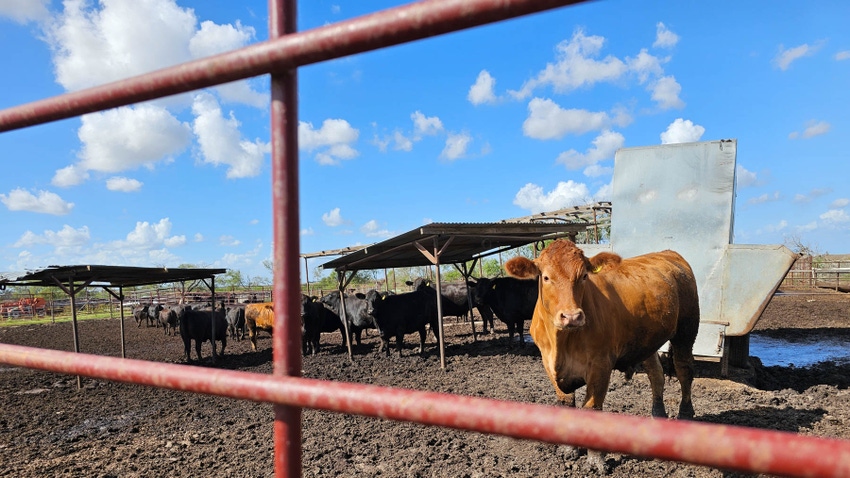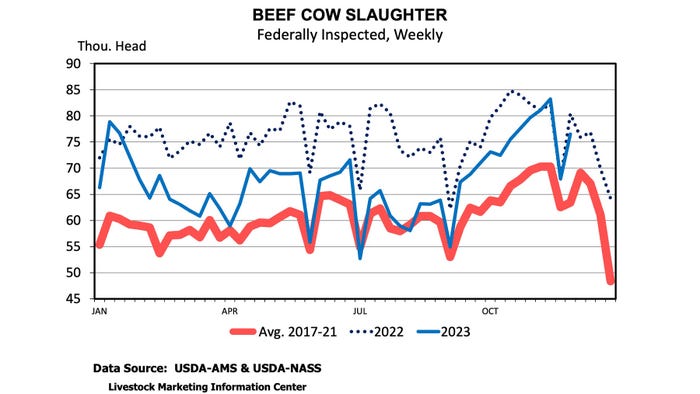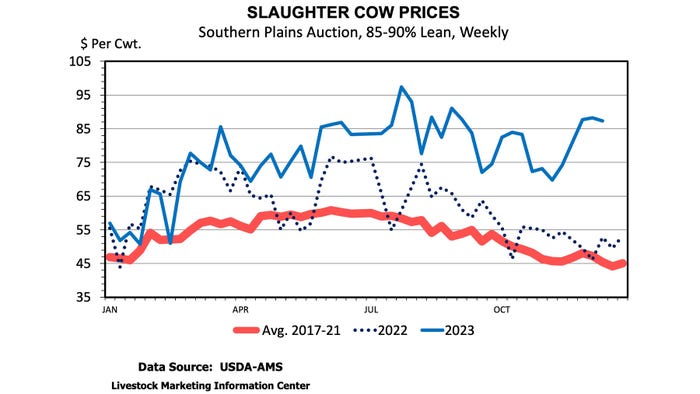
Beef cow culling normally peaks in the fall and this year has been no exception to that. The big surprise is just how big culling has been this fall, given a smaller cow herd.
Several reasons are probably combining to keep culling high. Drought in many areas, including the south, high cull cow prices, and high hay costs. Grabbing the high cull cow price today looks better than the future net returns from keeping her for another calf.

U.S. beef cow slaughter is 11.6% for the year, or 424,000 head, smaller than last year. But, beef cow slaughter has only been 2.4% below last year over the last six weeks. Culling for the week ending November 18th, at 83,200 head, was actually larger than the same week the year before and was the largest week in 2023. Any week with slaughter over 80,000 head is a big week.
The national slaughter data masks some regional differences over the last few weeks. Beef cow slaughter in the south, Region 4 in the federally inspected slaughter data, was 2.6% larger than the year before. Drought is likely a factor in culling in this region. Region 6 slaughter, which includes Texas, Oklahoma, Arkansas, and Louisiana, was 8.5% smaller than last year over the same period. Much of the Corn Belt region also had cow culling above a year ago.

Reduced dairy cow slaughter has kept total slaughter well below last year over the last few weeks, which has worked to boost cull cow prices. The normal fall decline in price appears to be over, with auction prices increasing from about $70 per cwt to $87 per cwt into mid-December.
The next weeks will be shortened due to the Christmas and New Year’s holidays. Early in January, cow slaughter tends to jump higher, led by more dairy culling. Overall, culling should continue to shrink in 2024 with higher cull cow prices.

Source: Southern Ag Today, a collaboration of economists from 13 Southern universities.
About the Author(s)
You May Also Like




